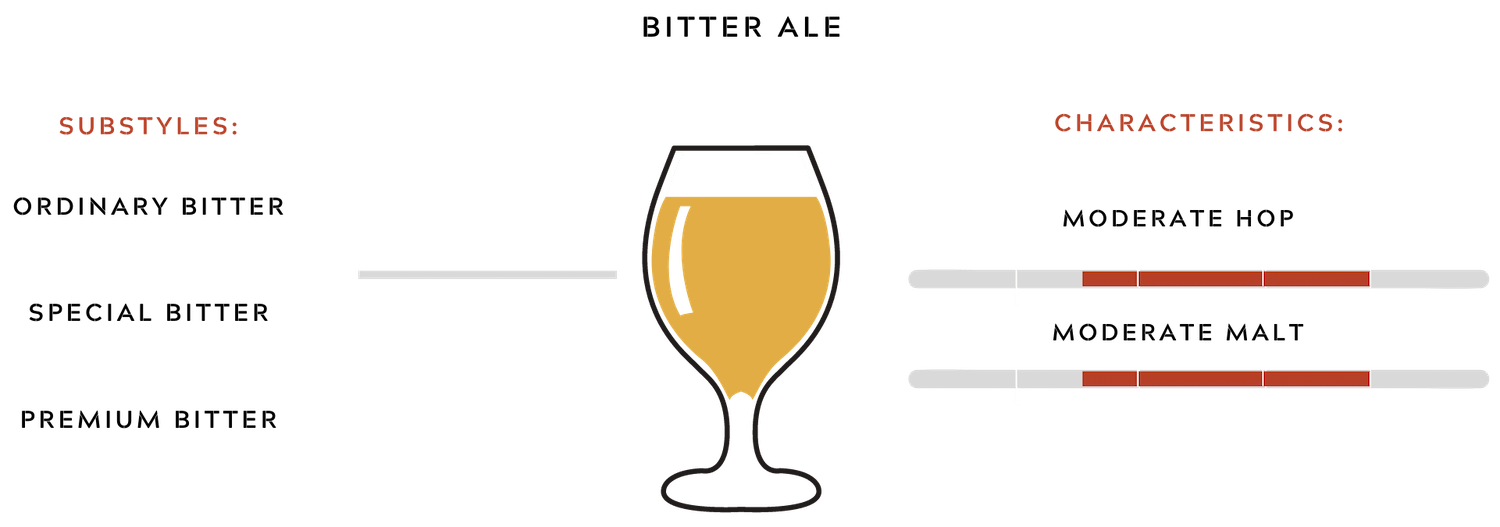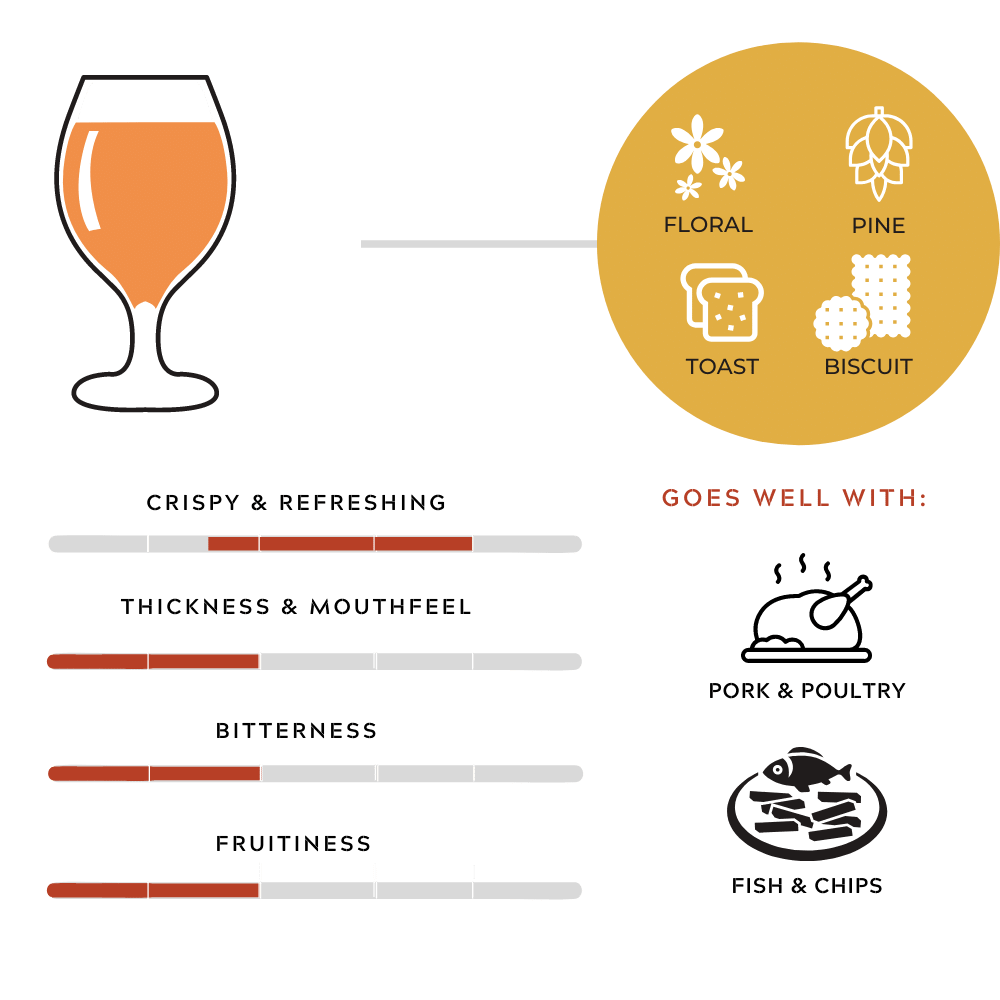A bitter ale, which is more commonly referred to as just a “bitter”, is essentially an English style pale ale that can vary quite extensively in its specific flavour profile and general attributes depending upon the specific sub-style considered but is generally defined by its highly sessionable nature and moderately bitter style.
This article offers further explanation on the uniqueness of bitter ales as they appear in England.
Although it might be easy to imagine these beers as being extremely high in their bitterness due to their name, their level of bitterness is actually not overwhelming, especially when compared to many other styles of ale, particularly India pale ales.
That being said, a prominent feature of these brews is their moderate levels of bitterness, which is often contrasted against a low to moderate amount of malty sweetness.
The sub-styles most commonly considered are those originating in England, namely:
Ordinary bitters are a lower alcohol sub-style of the broader bitter category that are renowned for their highly sessionable nature, courtesy of the aforementioned lower alcohol levels but also their low degree of carbonation, low to moderate hoppy fruit characteristics and moderate hoppy bitterness, and low to moderate malt profile.
When served, these beers will typically present as light to medium bodied beers that are pale amber to light copper in their colour and mostly clear, enhancing the beers reputation as an easy-drinking style.
Flavourwise, the hop strains and grain types generally used in the making of these beers often means that they typically contain earthy fruit flavours of pine resin and flowers contrasted by lightly toasted bread or biscuit flavours.
Due to the beer's easy-going style, they can match with a wide range of foods, including lightly seasoned roast chicken or pork, fish and chips, as well as almost any type of mild cheese.
Although very similar to ordinary bitters, special bitters are higher in their alcohol content and slightly more intense in their overall flavour profile, with most of them possessing a medium-body and a moderate to high amount of hoppy bitterness alongside a low to moderate degree of hoppy fruit flavour.
To contrast the stronger hop profile, these beers also possess a low to moderate malt profile that should be well-balanced enough to mean that the hop flavour and levels of bitterness do not overpower the malt profile.
With lower levels of carbonation, a colouring of gold to copper, and a high degree of clarity, the flavours most commonly found in special bitters includes fresh pine or mild citrus contrasted with lightly toasted bread and potentially some caramel.
Due to the overall stronger flavour profile of these beers when compared to ordinary bitters, they are best matched with heavier styles of food, including shepherds pie, greasy fish and chips, or sausages and mash.
If you’ve been following beer trends recently you would know that Hazy IPAs are all the new craze. Here, we explore what they are & how they taste & pair with food.
Interested in exploring craft beer but not sure where to begin? In this guide, we examine some of the best styles to start with for those looking for some quick guidance.
Beer cocktails? Far from being a far-flung notion, using beer to create exquisite cocktails is strongly advocated for by bartenders the world over. Here, we explore some of the best.


